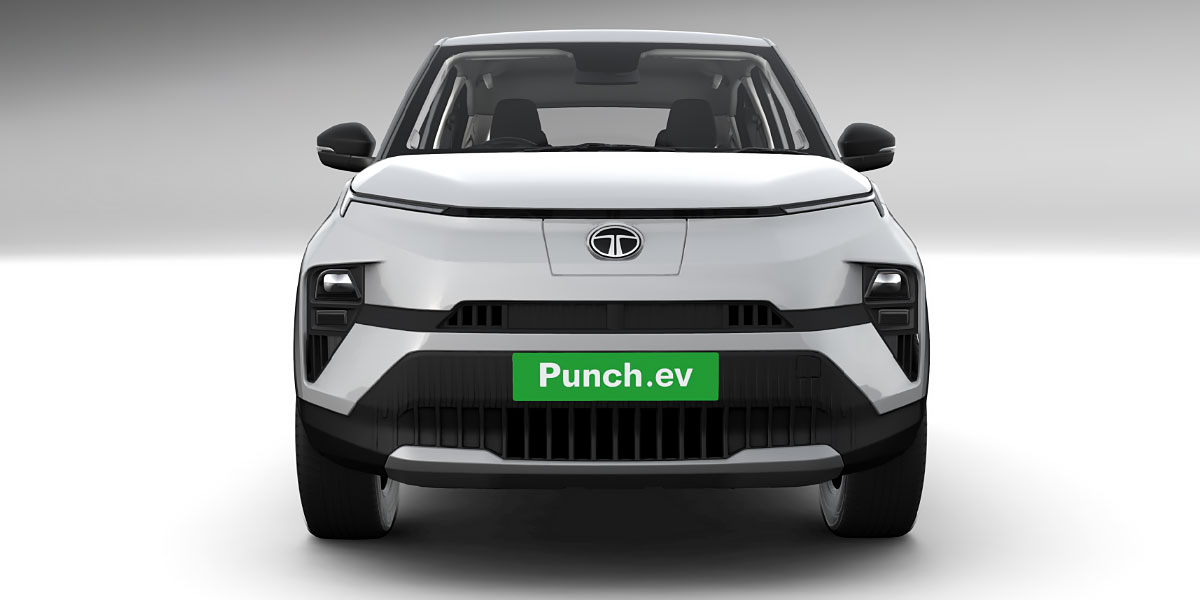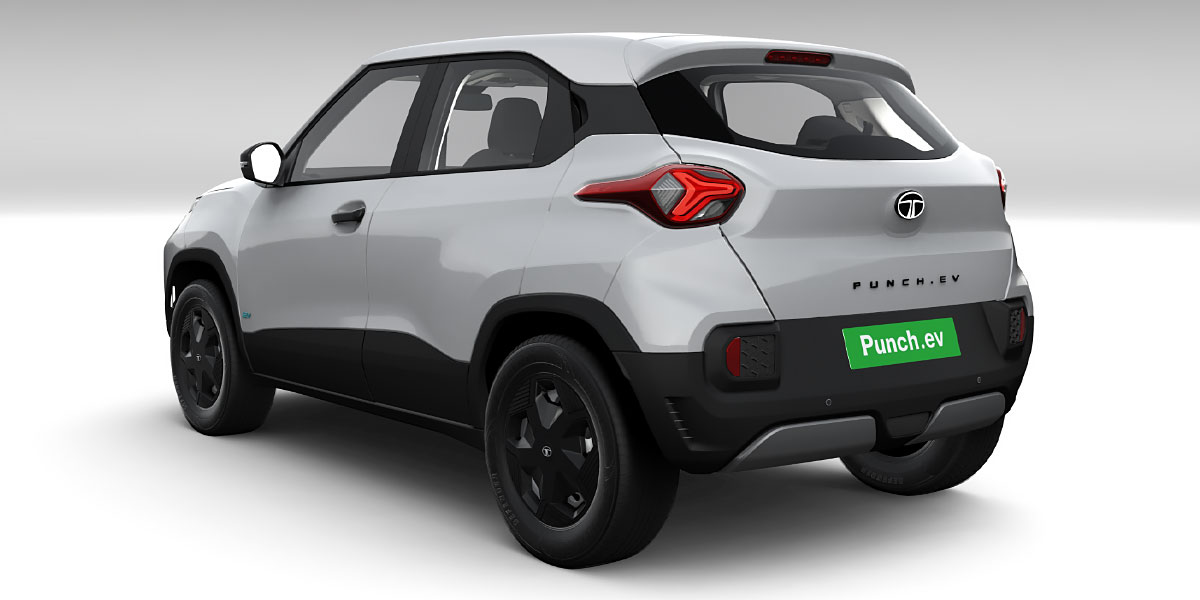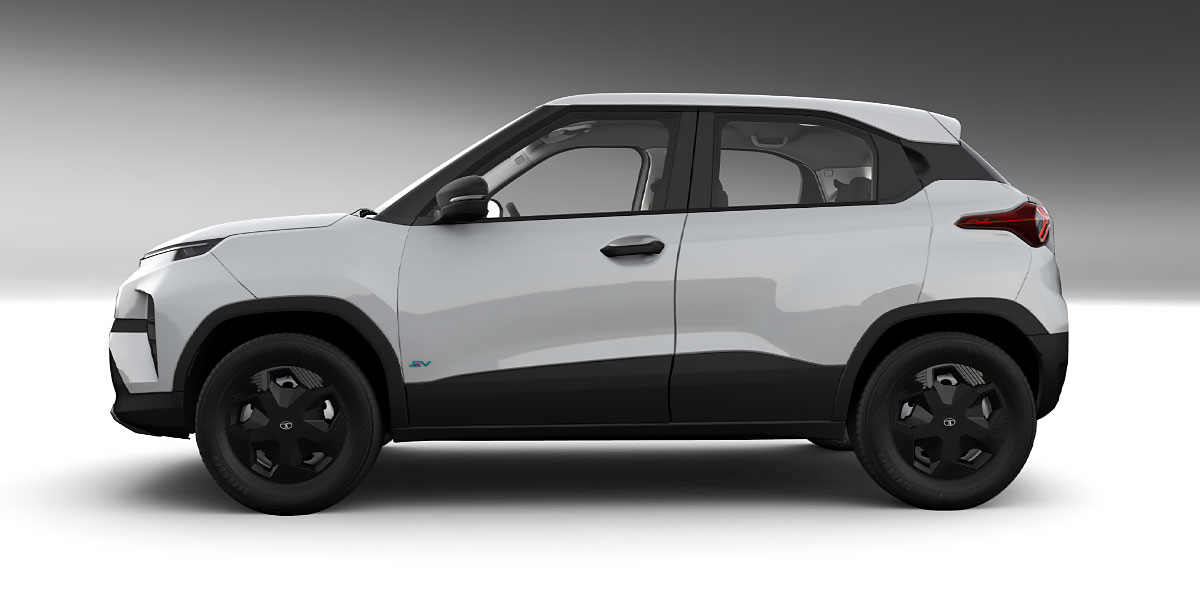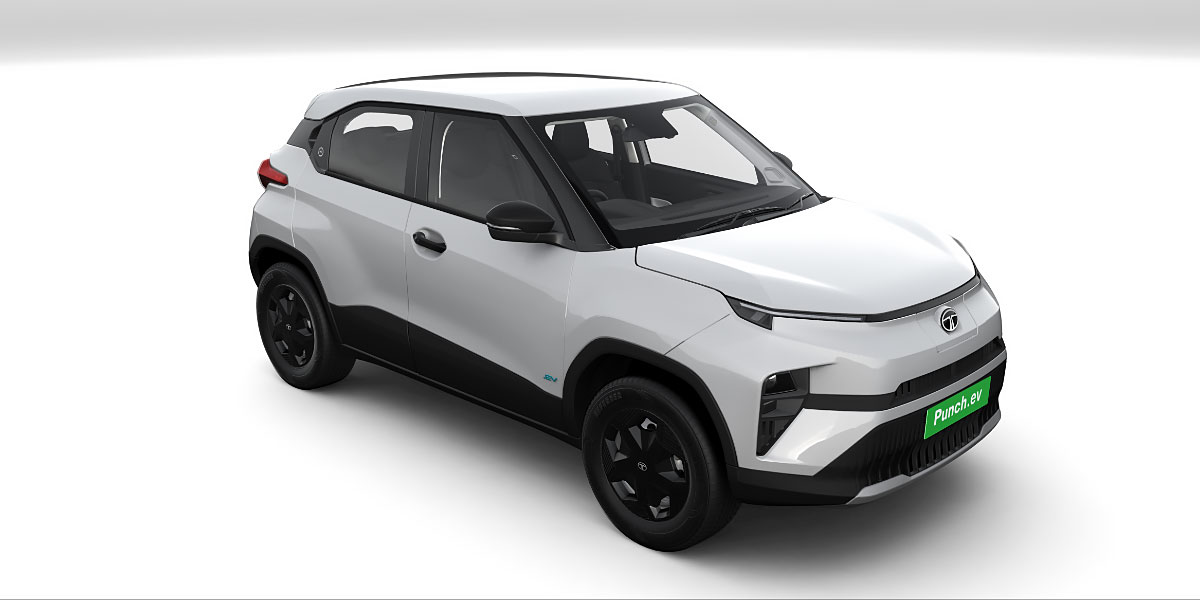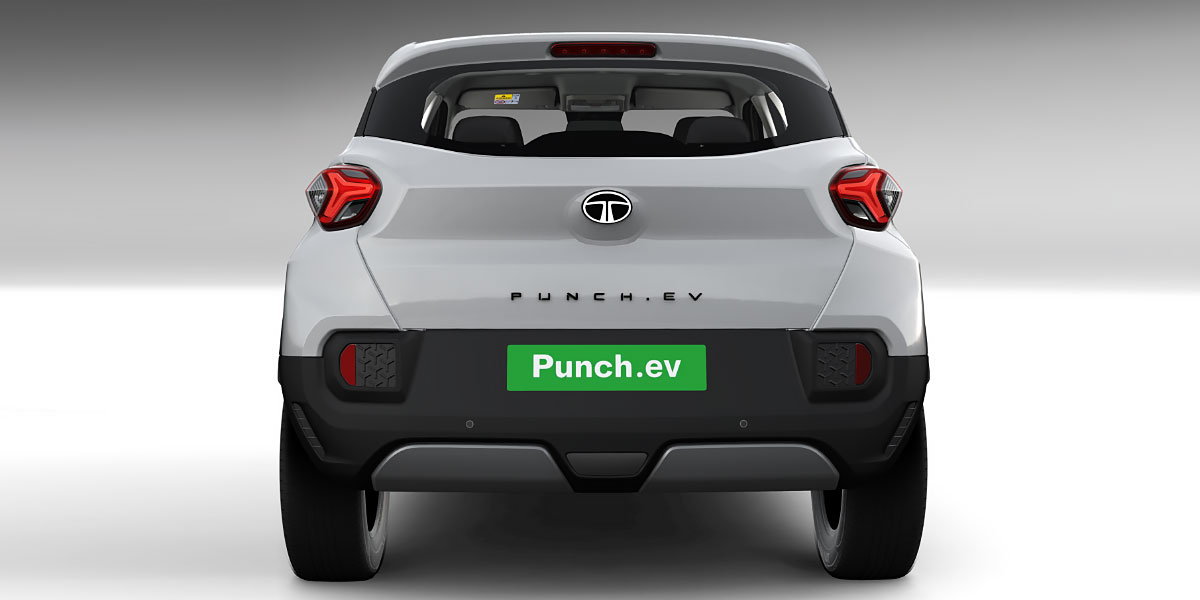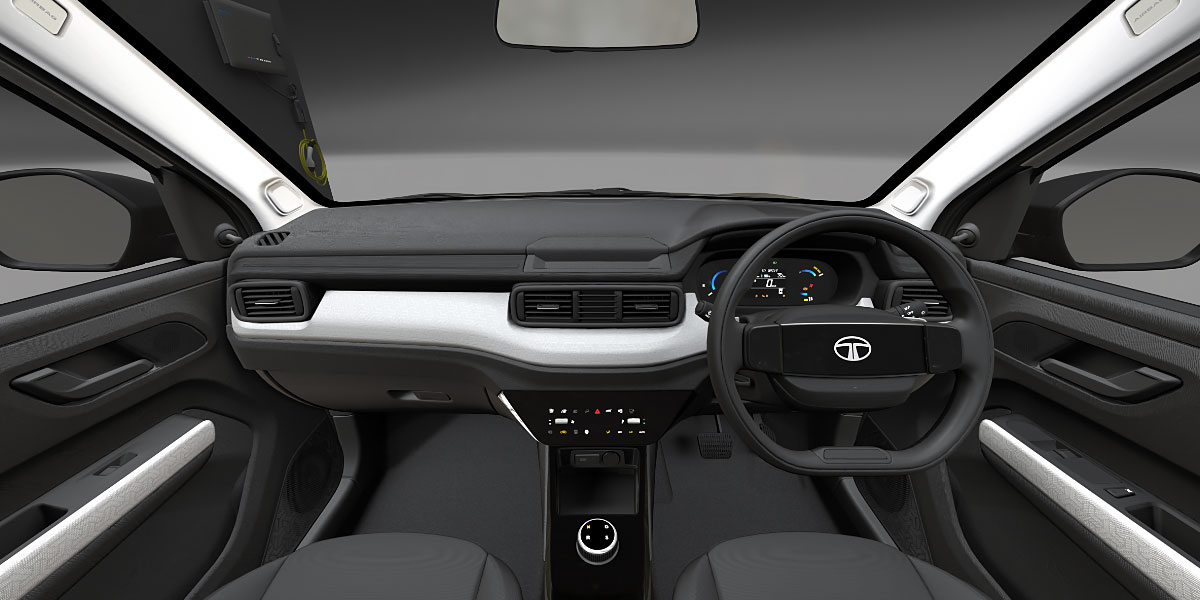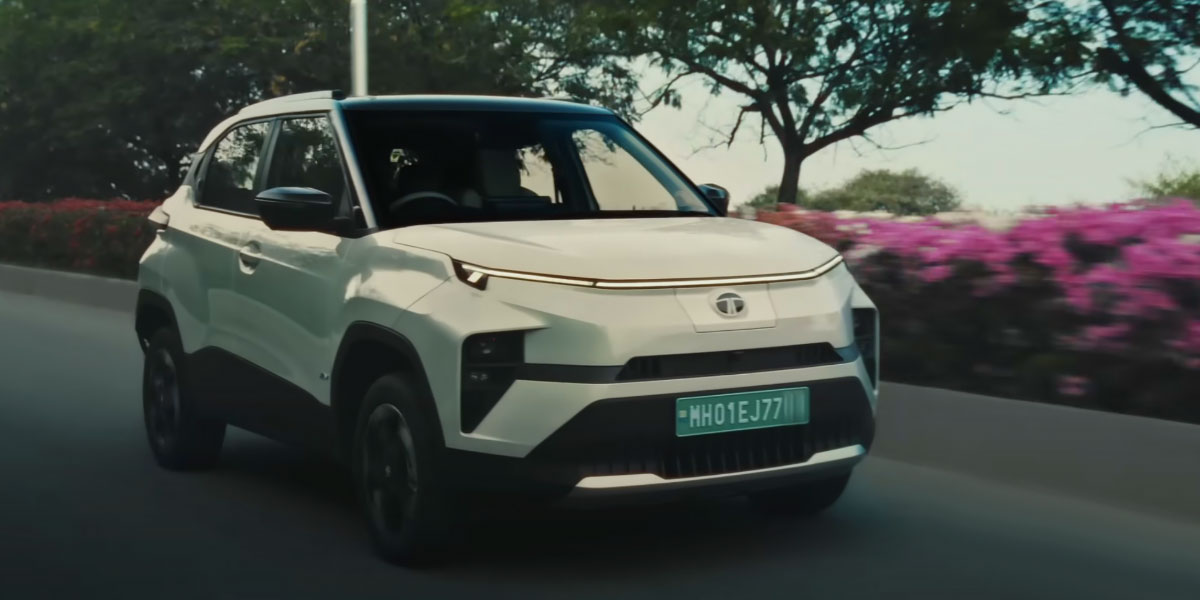Tata Punch EV
User Rating: 3.09 / 5





What is the Tata Punch EV?
The Tata Punch EV is a compact electric SUV from India offering up to 421 km (262 miles) range, a 35 kWh battery, 122 hp, and 0–100 km/h in 9.5 seconds. Starting at $11,680 (€10,862), it blends EV performance with SUV practicality.
Tata Punch EV price:
US$ 11680 *
| manufactured in | India |
| model year | 2024 |
| electric range (km) | 421 |
| battery (kWh) | 35 |
| max. speed (km/h) | 140 |
| 0 to 100 km/h (sec) | 9,5 |
| power (h.p.) | 122 |
| car type | SUV / 5 doors |
| drive type | FWD |
* Minimum price set by the manufacturer, excluding taxes and additional options
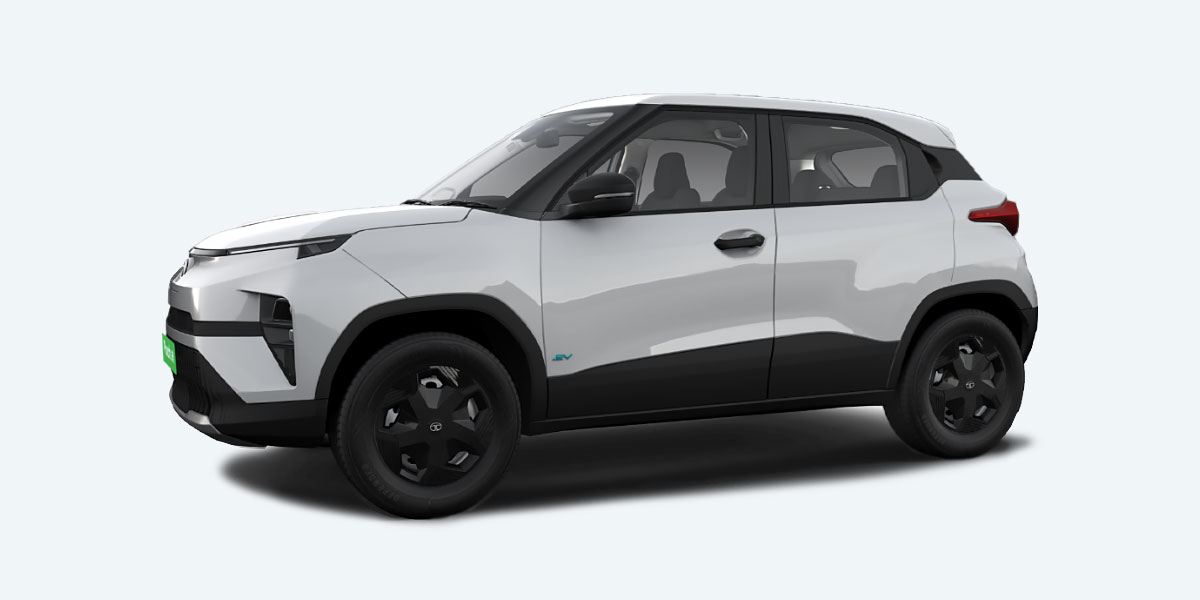
Exterior and Interior photos of Tata Punch EV
Tata Punch EV Review
Tata Punch EV: Tata’s Compact Electric SUV Packs a Serious Urban Wallop
The Tata Punch EV isn’t here to flex—it’s here to function. Introduced in 2024 and built on Tata’s new Acti.ev platform, this electric SUV doesn’t waste time trying to be anything it’s not. It starts at just $11,680 (€10,862), delivers up to 421 km (262 mi) of range, and comes loaded with tech usually reserved for pricier segments. Compact on the outside, punchy under the hood, and cleverly packaged, it’s tailor-made for India’s chaotic cityscape and suburban sprawl. For drivers craving SUV stance without EV sticker shock, this one hits a sweet spot.
- Built in India, the Punch EV is Tata’s latest urban SUV engineered for electric efficiency.
- Launched in January 2024, it rides on the modular Acti.ev platform tailored for future Tata EVs.
- At $11,680 (€10,862), it offers great value with features rivaling cars nearly twice the price.
- Targeted at urban commuters and families looking for rugged styling and everyday utility.
Punch EV Specs: Battery and Performance Breakdown
Battery Specs
Buyers can pick between two setups: a 25 kWh pack for those who stay within city limits, or the 35 kWh long-range version for weekend getaways. The big pack stretches claimed range to 421 km (262 miles), though real-world numbers hover around 280–310 km (174–193 miles). Home charging takes 5–7.5 hours via a 7.2 kW wall box. If you’re out and about, a 50 kW DC fast charger gets you from 10–80% in 56 minutes—capped at 25 kW actual output. Not lightning fast, but acceptable for its class.
- Battery options: 25 kWh, 35 kWh
- Charging (AC 7.2 kW): 5–7.5 hours (10–100%)
- Fast charging (DC 50 kW): 10–80% in 56 minutes
- Estimated range (real-world): 280–310 km (174–193 miles)
Performance Specs
The long-range Punch EV puts out 122 hp (91 kW) and 190 Nm (140 lb-ft) of torque. That’s enough grunt to push it from 0 to 100 km/h (62 mph) in just 9.5 seconds. With three drive modes—Eco, City, and Sport—plus four regen levels adjustable via paddle shifters, you can dial it in to match your commute. Ride quality leans firm, but the 190 mm (7.5 inches) of ground clearance makes it a breeze over speed bumps and monsoon-scarred roads.
- Top speed: 140 km/h (87 mph)
- Power: 122 hp (91 kW)
- Torque: 190 Nm (140 lb-ft)
- 0–100 km/h: 9.5 seconds
The Sport mode turns this docile commuter into a surprisingly eager sprinter—ideal for overtakes without waiting for divine intervention.
Punch EV Exterior and Interior Highlights
Exterior
The Punch EV keeps its chunky SUV silhouette but dresses it up with futuristic touches. A lightbar stretches across the front and doubles as a charging indicator—pretty clever. The grille’s been blanked out (because EV), and a centrally mounted charging port sets it apart from Tata’s past EVs. While the rear is a near-copy of the ICE Punch, it doesn’t feel out of place. Wheel options span 15 to 16 inches, depending on trim.
Interior
Inside, you get a cabin that punches above its class. Dual 10.25-inch displays dominate the dash, and they’re both sharp and responsive. The infotainment screen runs Tata’s new Arcade.ev suite, giving access to YouTube, Netflix, and more—just make sure you’ve got data. Ambient lighting, a jeweled rotary gear selector, and ventilated front seats elevate the experience. Rear seat space is fine for two adults but tight for three. The 366-liter boot and 14-liter frunk provide decent cargo flexibility.
Pros and Cons of the Punch EV
Pros
- Impressive range for the price
- Premium dual-screen infotainment setup
- Good ground clearance and solid ride
- Punchy acceleration and city agility
- 5-star Bharat NCAP safety rating
Cons
- No rear AC vents and tight rear shoulder space
- Touch HVAC panel feels finicky
- Drive selector is sluggish during quick maneuvers
- No ADAS or lane-keep assist
Conclusion: Punch EV Delivers Affordable Electrified Versatility
If you’re looking to electrify your garage with something that looks rugged, drives sharp, and won’t wreck your finances, the Punch EV delivers. It’s smart, it’s sorted, and it’s exactly what electric SUVs should be—accessible, capable, and clever where it counts.
Manufacturer: Tata Motors
Related Video
Comparison:
In the compact electric SUV space, the Tata Punch EV squares up against contenders like the Citroën eC3, MG Comet EV, BYD Yuan UP, and Hyundai Casper EV. Here's how the specs and pricing stack up where it counts.
Range
The Punch EV’s 421 km (262 mi) claimed range leads the segment. Real-world figures put it ahead of the eC3 (~320 km), MG Comet EV (around 230 km), and the Casper EV (300–320 km). The BYD Yuan UP edges close at 400 km (248 mi).
Acceleration
With a 0–100 km/h time of 9.5 seconds, the Punch EV keeps pace with the BYD Yuan UP and outruns the eC3 (11.2 seconds) and MG Comet (slower, due to low output). Hyundai Casper is still unverified but expected around 10 seconds.
Power
The Punch EV delivers 122 hp (91 kW), more than the eC3 (57 hp), Comet EV (41 hp), and Casper EV (expected 80 hp). Only the Yuan UP rivals it with similar horsepower levels.
Charging Time
With a DC fast charge to 80% in 56 minutes, the Punch EV matches the eC3 and Yuan UP. The Comet EV lacks DC fast charging entirely. Casper EV specs are still developing but expected to match Tata’s setup.
Price
Priced at $11,680, £9,200, €10,862, the Punch EV undercuts the Yuan UP ($15,800), eC3 ($13,300), Casper EV (~$12,800), and Comet EV ($11,500), offering more tech and power per dollar.
F.A.Q.:
What is the usable battery capacity?
The Tata Punch EV offers either a 25 kWh or 35 kWh battery, depending on the selected variant, both using Tata’s new Acti.ev architecture.
What is the real driving range?
Real-world range for the 35 kWh version averages between 280–310 km (174–193 mi), while the 25 kWh version delivers 190–240 km (118–149 mi).
What’s the top speed?
The Punch EV has a top speed of 140 km/h (87 mph), suitable for highway driving and city commuting alike.
How fast does it accelerate?
The Punch EV accelerates from 0 to 100 km/h (0–62 mph) in 9.5 seconds in its long-range variant, delivering solid urban performance.
What’s the total horsepower and torque?
The long-range Punch EV makes 122 hp (91 kW) and 190 Nm (140 lb-ft) of torque, ensuring quick throttle response and confident driving.
How long does it take to charge?
Using a 7.2 kW wall box, charging takes 5–7.5 hours. A 50 kW DC fast charger can replenish from 10–80% in 56 minutes.
What does it cost?
The Tata Punch EV starts at $11,680, approximately £9,200 or €10,862, making it one of the most affordable compact electric SUVs available.

